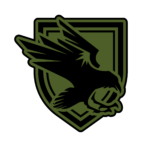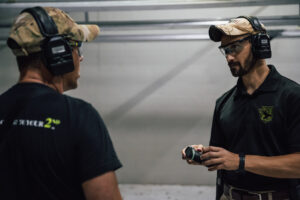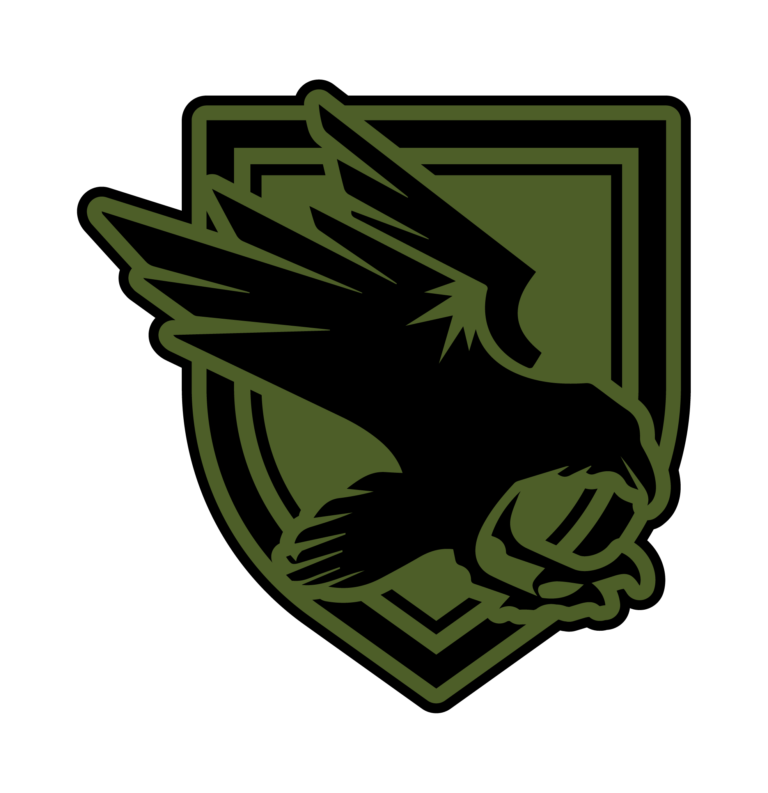Introduction
For new gun owners, navigating the vast sea of training methods can be daunting. That’s where the Shooter-Coach training method comes into play—a collaborative learning approach that not only enhances your shooting skills but also deepens your understanding of firearms safety and technique.
Understanding Different Types of Learning in Firearms Training
Visual Learning
Visual learners thrive by seeing actions performed. In firearms training, this means watching demonstrations of proper stance, grip, and trigger pull. The Shooter-Coach method capitalizes on this by allowing the shooter to observe their coach’s techniques, providing a live model to emulate.
Auditory Learning
Auditory learners absorb information through listening. Verbal instructions, corrections, and feedback are their bread and butter. In the Shooter-Coach dynamic, both participants actively discuss techniques, errors, and improvements, making learning a truly interactive experience.
Kinesthetic Learning
For kinesthetic learners, nothing beats hands-on practice. The physical act of handling the firearm, aligning sights, and adjusting posture based on feedback is crucial. The Shooter-Coach method ensures that both the shooter and the coach are engaged in continuous, hands-on learning, reinforcing muscle memory through repetition and correction.
I Integrate these learning types into my private lessons, because the Shooter-Coach method offers a well-rounded approach that adapts to individual preferences, enhancing comprehension and skill retention.
The Fundamentals of the Shooter-Coach Concept
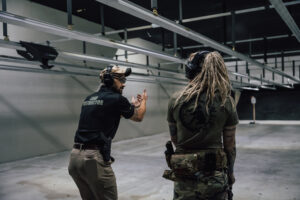
The Shooter-Coach concept revolves around the idea of mutual learning and support. It’s a partnership where two shooters work together, taking turns in the roles of the shooter and the coach. This method fosters a deep understanding of firearms handling, safety, and technique through active participation and feedback. Let’s delve deeper into how this concept can be effectively implemented, especially in a setting as common and accessible as a public gun range.
Definition and Origin
At its core, the Shooter-Coach method is about collaboration. Originating from military and law enforcement training programs, where peer-to-peer learning has long been recognized for its effectiveness, this approach has been adapted for civilian use to enhance learning outcomes and safety awareness among new gun owners.
Roles and Responsibilities
- Shooter: The individual actively engaging in firing exercises. Their focus is on applying techniques, following safety protocols, and implementing the feedback received from their coach.
- Coach: The observer and guide, responsible for providing constructive feedback, ensuring safety protocols are followed, and assisting the shooter in technique adjustment and improvement.
Both roles require active engagement and attention. The coach is not just a passive observer but an active participant in the learning process, providing real-time feedback and encouragement.
The Cyclic Process Explained
- Planning: Before arriving at the range, the pair should discuss their goals for the session, including specific skills to focus on or drills to practice.
- Execution: At the range, the shooter performs the agreed-upon exercises while the coach observes, taking note of both strengths and areas for improvement.
- Feedback: After the execution phase, the coach provides detailed feedback, focusing on what was done well and what could be improved. This feedback should be specific, actionable, and supportive.
- Adjustment: Based on the feedback, the shooter attempts to incorporate the suggestions into their technique in subsequent rounds of practice.
Implementing in Practice Sessions at a Public Gun Range
Implementing the Shooter-Coach technique at a public gun range requires careful planning and adherence to range rules to ensure safety and efficiency. Here’s a concept process for integrating this method into your training regimen:
- Preparation: Before heading to the range, select a partner who shares your commitment to safety and learning. Discuss your goals for the session, including the skills each of you wishes to develop or refine.
- Safety Briefing: Begin your range session with a safety briefing. Review the four fundamental safety rules of gun handling, and agree on clear signals to cease fire or correct unsafe behavior immediately.
- Drill Selection: Choose drills that cater to the skills you both aim to improve. These could range from basic marksmanship principles, such as trigger control and sight alignment, to more advanced drills involving movement or decision-making.
- Role Assignment: Decide who will shoot first and who will coach. Remember, the roles will be reversed regularly to ensure both participants benefit equally from the training.
- Live Fire: The shooter executes the drill while the coach observes from a safe position. The coach should pay attention to the shooter’s stance, grip, presentation, follow through, and adherence to safety protocols.
- Feedback and Adjustment: After the drill, the coach provides feedback. This should be a constructive conversation, focusing on what was done well and areas for improvement. Use specific examples from the drill to illustrate points.
- Role Reversal: After a set number of drills or time, switch roles. This ensures both partners receive equal time practicing and coaching.
- Reflection: At the end of the session, discuss what was learned, any progress made, and plan for future sessions. Reflecting on the experience can reinforce the lessons and provide motivation for continued improvement.
Implementing the Shooter-Coach method at a public range requires clear communication, mutual respect, and a shared commitment to safety and learning. By following these guidelines, shooters can make the most of their range time, accelerating their skill development while fostering a supportive and collaborative learning environment.
Advantages of the Shooter-Coach Method Over Traditional Learning Techniques
Personalized Feedback
The Shooter-Coach method excels in providing immediate, personalized feedback, something that is often missing in larger classes or solo practice.
Active Engagement
This method keeps both participants fully engaged, ensuring that learning is a dynamic, active process.
Psychological Support
Learning alongside a peer provides emotional and psychological support, making the challenging journey of firearms training less intimidating.
Cost-Effectiveness
Utilizing peer resources minimizes training costs, making it accessible to a wider range of gun owners.
Increased Benefits with an Experienced Coach
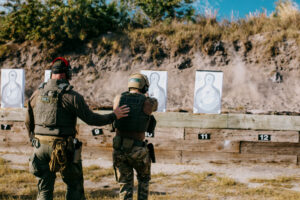
The advantages of engaging with a Shooter-Coach methodology, particularly under the mentorship of a seasoned professional, are profound. When the coaching comes from someone with extensive field and instructional experience, the learning outcomes are not just accelerated; they are deeply ingrained. Here’s a closer look at how this expert guidance elevates the shooter’s experience:
Accelerated Skill Acquisition
Guidance from an experienced instructor streamlines the learning process. The ability to quickly identify and correct errors ensures that learners can make immediate improvements. Tailored feedback, based on years of instructing and operational experience, ensures that every lesson is maximally effective, focusing precisely on the shooter’s needs.
Improved Skill Retention
An expert’s knack for breaking down complex skills into digestible, understandable chunks means that learners don’t just practice; they absorb. This approach ensures that foundational skills in firearms handling and safety become second nature, setting a robust framework for ongoing development.
Boosted Confidence
Learning from someone with a proven track record provides reassurance and builds confidence. Celebrating successes while addressing areas for improvement in a constructive manner fosters a positive learning environment. This confidence extends beyond technical skills, encompassing all aspects of responsible firearm ownership and usage.
Enhanced Adaptability
With a background that spans multiple disciplines within firearms training, an expert instructor equips learners to handle a variety of firearms and adapt to different shooting scenarios. This versatility is invaluable, ensuring preparedness for a wide range of situations.
The Expert Edge
Training with a professional offers a structured approach refined through extensive instructional experience. This holistic training covers the mechanical, mental, and physical aspects of shooting, ensuring a comprehensive skill set.
For those looking to elevate their shooting skills, booking a private lesson offers a unique opportunity for personalized, expert guidance. This is an invitation to not just improve marksmanship but to become a well-rounded, confident, and responsible firearms user.
Discover the difference that professional guidance can make in your firearms training journey. Visit Raven Corps Training Solutions for more details on private lessons. Whether aiming to sharpen basic marksmanship, master tactical techniques, or explore precision long-range shooting, expert instruction can guide you every step of the way. Embrace this opportunity to train with the best and transform your approach to firearms mastery.
Conclusion
The Shooter-Coach training method is more than just a way to improve marksmanship—it’s a journey into the heart of what it means to be a responsible gun owner. By embracing this approach, new gun owners can accelerate their learning, deepen their understanding, and foster a supportive community of skilled shooters. Remember, the path to mastering firearms is a marathon, not a sprint, and with the Shooter-Coach method, you’re never running alone.
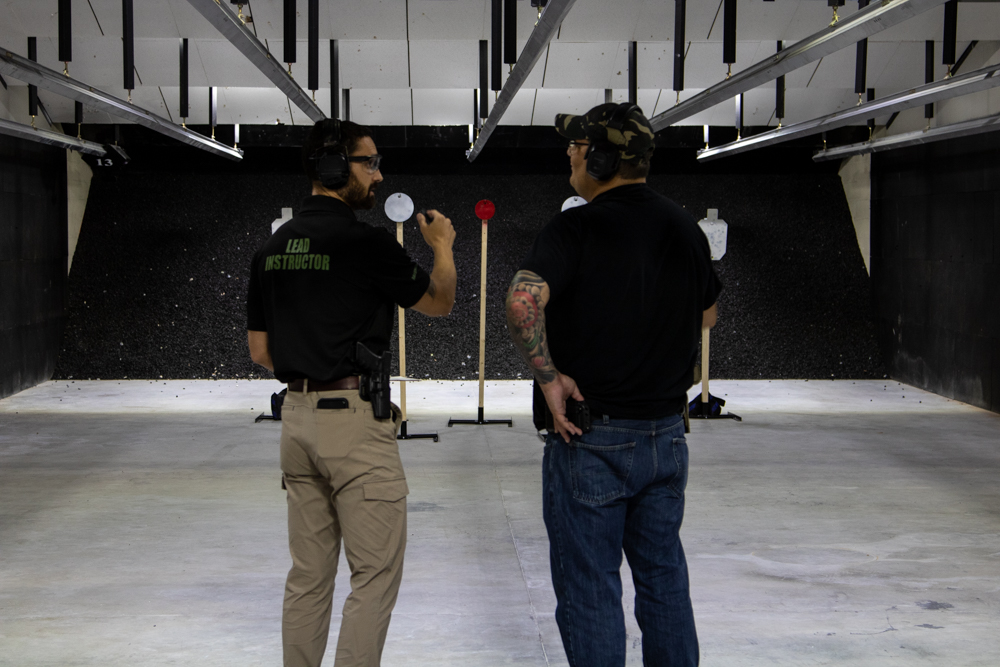
Want to improve your skills? Book a private lesson with me today and I’ll help you diagnose and improve your shooting.
